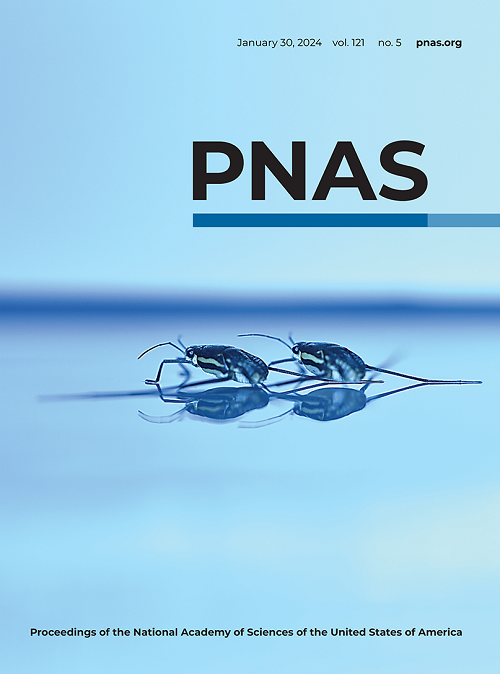Targeting of hyperlipid-producing senescent synovial fibroblasts to ameliorate cartilage degeneration
IF 9.4
1区 综合性期刊
Q1 MULTIDISCIPLINARY SCIENCES
Proceedings of the National Academy of Sciences of the United States of America
Pub Date : 2025-06-05
DOI:10.1073/pnas.2417708122
引用次数: 0
Abstract
Osteoarthritis (OA) is one of the most common causes of physical disability among older people and its incidence increases with age. Removal of the senescent cells (SNCs) delays OA pathologies, but little is known about the heterogeneity of SNCs and their roles in OA pathogenesis. Here, we identify a subpopulation of senescent synovial cells and proposed a molecular mechanism governing pathogenic synovium-cartilage crosstalk in OA progression. Using single-cell RNA sequencing and synovial organoids, we demonstrate that RCAN1靶向产生高脂的衰老滑膜成纤维细胞改善软骨变性
骨关节炎(OA)是老年人身体残疾的最常见原因之一,其发病率随着年龄的增长而增加。衰老细胞(SNCs)的去除会延缓OA的发病,但SNCs的异质性及其在OA发病机制中的作用尚不清楚。在这里,我们确定了衰老滑膜细胞亚群,并提出了OA进展中控制致病性滑膜-软骨串扰的分子机制。通过单细胞RNA测序和滑膜类器官,我们发现RCAN1 + IL1α +衰老滑膜成纤维细胞,主要位于人OA滑膜的内衬层,表现出促炎表型,线粒体功能障碍,并促进软骨变性。机制上,RCAN1稳定ATF4 mRNA,介导滑膜成纤维细胞分泌饱和脂肪酸(SFA),促进软骨细胞衰老和软骨基质降解。滑膜靶向递送抗rcan1 siRNA可显著改善小鼠创伤后骨性关节炎的发展,减少滑膜中SNC的积累并增加软骨再生。人OA软骨外植体和滑膜类器官共培养实验证实,在滑膜成纤维细胞中RCAN1沉默可抑制软骨细胞衰老和软骨降解。我们的研究结果揭示了在OA进展中RCAN1 + il - 1α +衰老滑膜成纤维细胞和分泌脂质介导的软骨细胞之间的前退行性相互作用。在衰老滑膜中靶向RCAN1敲除可能是恢复关节稳态的一种新的治疗策略。
本文章由计算机程序翻译,如有差异,请以英文原文为准。
求助全文
约1分钟内获得全文
求助全文
来源期刊
CiteScore
19.00
自引率
0.90%
发文量
3575
审稿时长
2.5 months
期刊介绍:
The Proceedings of the National Academy of Sciences (PNAS), a peer-reviewed journal of the National Academy of Sciences (NAS), serves as an authoritative source for high-impact, original research across the biological, physical, and social sciences. With a global scope, the journal welcomes submissions from researchers worldwide, making it an inclusive platform for advancing scientific knowledge.

 求助内容:
求助内容: 应助结果提醒方式:
应助结果提醒方式:


